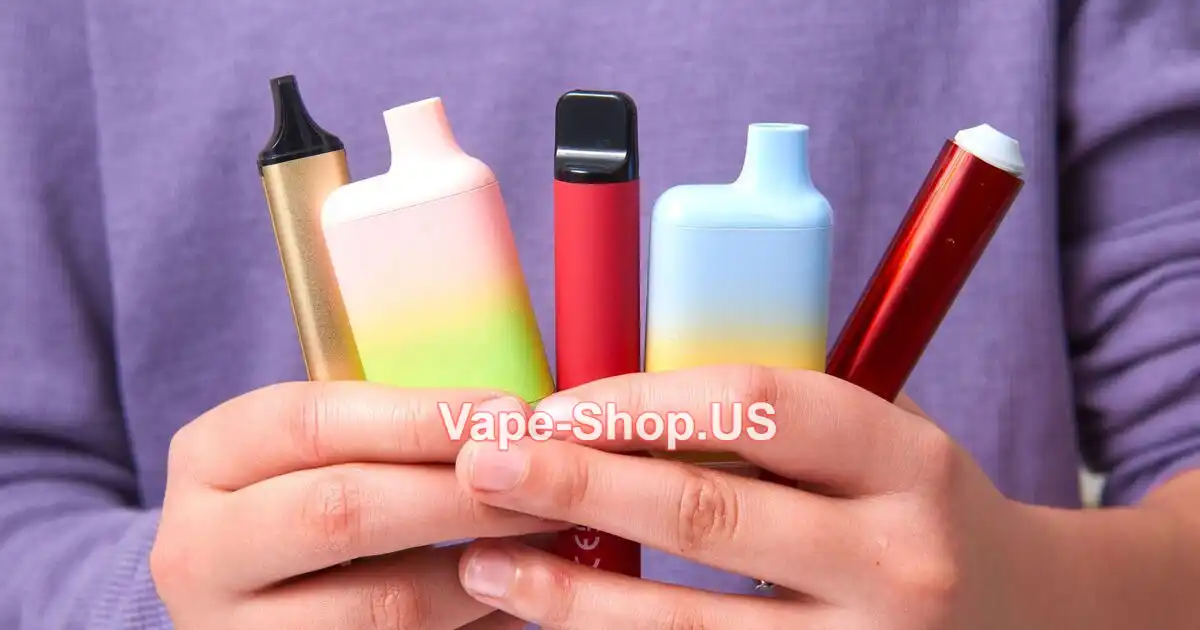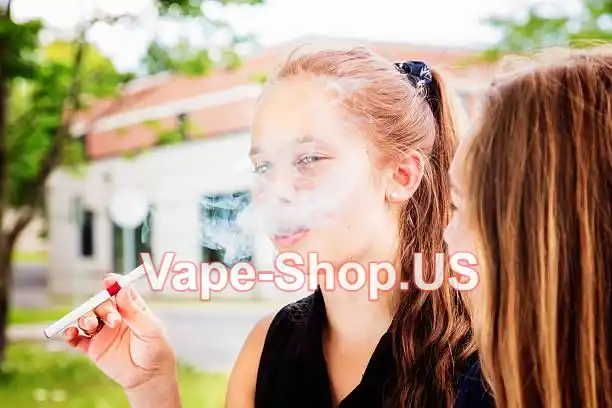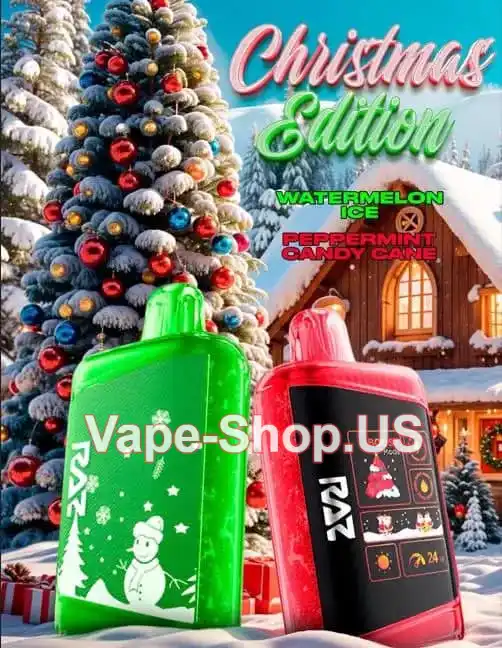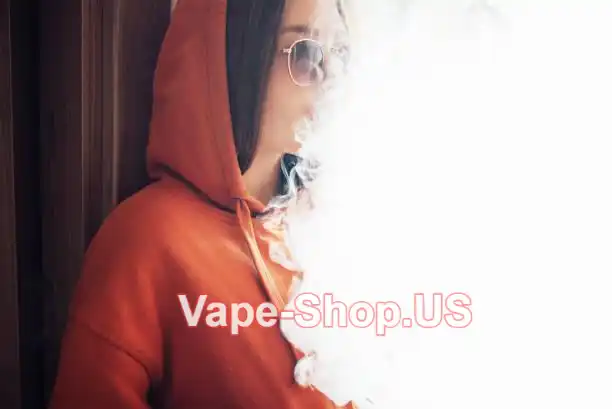UK Health Officials Slam Holiday-Themed Vapes for Targeting Teens, Call for Stricter Age Verification
The UK's National Health Service (NHS) has sharply criticized the rising trend of holiday-themed vapes, accusing vape companies of marketing their products in ways that specifically appeal to younger audiences. These "festive flavors"—ranging from candy cane to gingerbread and spiced pumpkin—are reportedly causing an alarming uptick in the number of teenagers using vapes, raising serious health concerns. As vaping among teens skyrockets, NHS leaders are now calling for more rigorous age verification and retail safeguards to prevent underage users from buying these products.
In a statement issued this December, NHS Medical Director Stephen Powis slammed the vaping industry for capitalizing on the festive season by promoting sweet, holiday-inspired flavors aimed at luring teens into trying vapes. Powis warned that the marketing of these products is fueling a public health crisis, one that is exacerbating the already widespread issue of nicotine addiction among young people.
Teen Vaping: An Alarming Trend

Recent NHS data paints a troubling picture: over a seven-month period leading up to October 2023, 280 people were hospitalized due to vaping-related illnesses, with a surprising number of them being teenagers. Among the 280, 31 patients were 19 years old or younger. Just in the 2023-2024 fiscal year, the number of children and teens requiring hospitalization due to vaping-related issues surged to 51—a significant jump from the 11 cases reported in 2021-2022. In total, 317 people across all age groups needed medical treatment for vape-related health problems as of March 2024, showing a clear upward trend.
As vaping becomes an increasing part of youth culture, concerns over long-term health consequences have reached a boiling point. NHS reports show that in 2023, one in four students aged 11-15 had tried vaping, and nearly 9% of them were regular users. These numbers are alarming, especially when juxtaposed with the fact that only a few years ago, teen vaping rates were much lower.
A separate survey reveals that 72% of teens aged 11-17 have seen vaping promotions, with 55% of these encounters happening in physical stores and 29% occurring online. The festive-themed vape products, which include popular flavors like candy cane, cinnamon swirl, and spiced apple, are clearly marketed to appeal to young tastes and seasonal trends.
The Marketing Strategy: Festive Flavors and Flashy Promotions

The introduction of these holiday flavors isn't just a coincidence—it’s a deliberate marketing strategy designed to attract younger, impressionable consumers. Vaping companies have long been accused of using flavors like "bubblegum," "cotton candy," and "fruity pebbles" to make vaping more appealing to teens. But with the addition of festive flavors, the allure of holiday-themed products has now extended into the winter months, giving vape companies another opportunity to hook young users.
There’s no denying that these seasonal promotions are working. For many young people, the holidays represent a time of indulgence and fun, and the idea of trying out a "candy cane" vape or a "peppermint hot chocolate" flavored vape feels like a treat—a harmless and enjoyable part of the season. Unfortunately, for many teens, these first experiences with vaping can turn into a long-term addiction to nicotine, a substance that can have serious, life-long effects on the developing brain.
As Powis explained in his remarks, while vaping can be an effective smoking cessation tool for adults, it should not be used by children or teenagers. In fact, studies have shown that teens who vape are more likely to transition to smoking traditional cigarettes, which further compounds the public health risks.
The Growing Concern: Impact on Health
The health implications of teen vaping are substantial. Nicotine exposure during adolescence can interfere with brain development, potentially leading to lifelong issues with attention, learning, and mood regulation. Additionally, there are growing concerns about the toxic substances found in vape liquids, which can cause lung damage and other respiratory issues. In some cases, young people have suffered from severe lung injuries and even death as a result of using vapes, leading public health experts to question the long-term safety of these products.
The rise in vaping-related illnesses has prompted NHS to urge retailers—both in-store and online—to implement stricter age verification measures. Powis pointed out that many online retailers fail to adequately check the age of those purchasing vaping products, allowing underage teens to easily access vapes. He called for a crackdown on these sales, particularly around the holiday season when festive flavors are being marketed heavily.
One of the key issues, experts say, is the lack of consistency in how age verification is handled online. While some websites require proof of age before a purchase is made, others rely on self-reporting, which is notoriously unreliable. With the advent of social media platforms like TikTok, where young users frequently share their vaping experiences and promote different products, the ease with which teens can access vape products has become a serious concern.
What Can Be Done?
The NHS is calling on both the government and retailers to take swift action to address the growing problem. In particular, Powis has asked for stricter enforcement of age restrictions, better monitoring of online sales, and increased public education about the dangers of vaping. In addition, there is a growing push for clearer labeling on vape products, especially with regard to the nicotine content and potential health risks.
Several health organizations in the UK have also called for a ban on flavored vapes altogether, citing the fact that flavors like "blue raspberry" and "watermelon ice" are clearly targeted at children and adolescents. The argument is that these flavors serve no purpose other than to make vaping more appealing to young people, and they should be removed from the market to protect public health.
Social Media and Vaping Culture
One of the most significant factors contributing to the rise in teen vaping is social media. Platforms like TikTok, Instagram, and Snapchat have become breeding grounds for vape culture, with many influencers and "vape stars" posting videos of themselves using vapes and promoting various flavors. For young people, these videos often normalize vaping and make it seem like a fun, harmless activity.
In fact, many teens who would never have considered smoking a cigarette are now turning to vapes, drawn in by the colorful packaging, sweet flavors, and peer pressure on social media. The trend has become so widespread that some experts are now referring to it as a "vaping epidemic."
One troubling aspect of this phenomenon is that vaping is often seen as a "cool" or "rebellious" act, something that’s promoted through viral trends and influencer endorsements. For teens, who are particularly susceptible to social pressures, this can make vaping seem like an essential part of fitting in or expressing one’s individuality. The reality, however, is that vaping is not only addictive, but it can also pose serious risks to a teen’s health and development.
Looking Ahead: What Needs to Change?
As the evidence mounts and the dangers become clearer, the UK’s NHS is urging both the government and retailers to step up and take action before the issue spirals out of control. Whether it’s through more effective age checks, the elimination of festive and youth-oriented flavors, or more widespread public education campaigns, there is a clear need for change.
In the end, the goal is not to take away the option of using vapes as a smoking cessation tool for adults, but to ensure that they are kept out of the hands of young people who are still developing and are more vulnerable to the addictive properties of nicotine. This will require a concerted effort from health authorities, retailers, and lawmakers alike to address the growing problem before it becomes an even bigger health crisis.
As we head into the new year, let’s hope that more stringent measures are put in place to protect the next generation from falling victim to the dangers of vaping—and that this holiday season, young people are no longer tempted by the sweet, yet harmful, flavors of festive vapes.


Vape Reviews